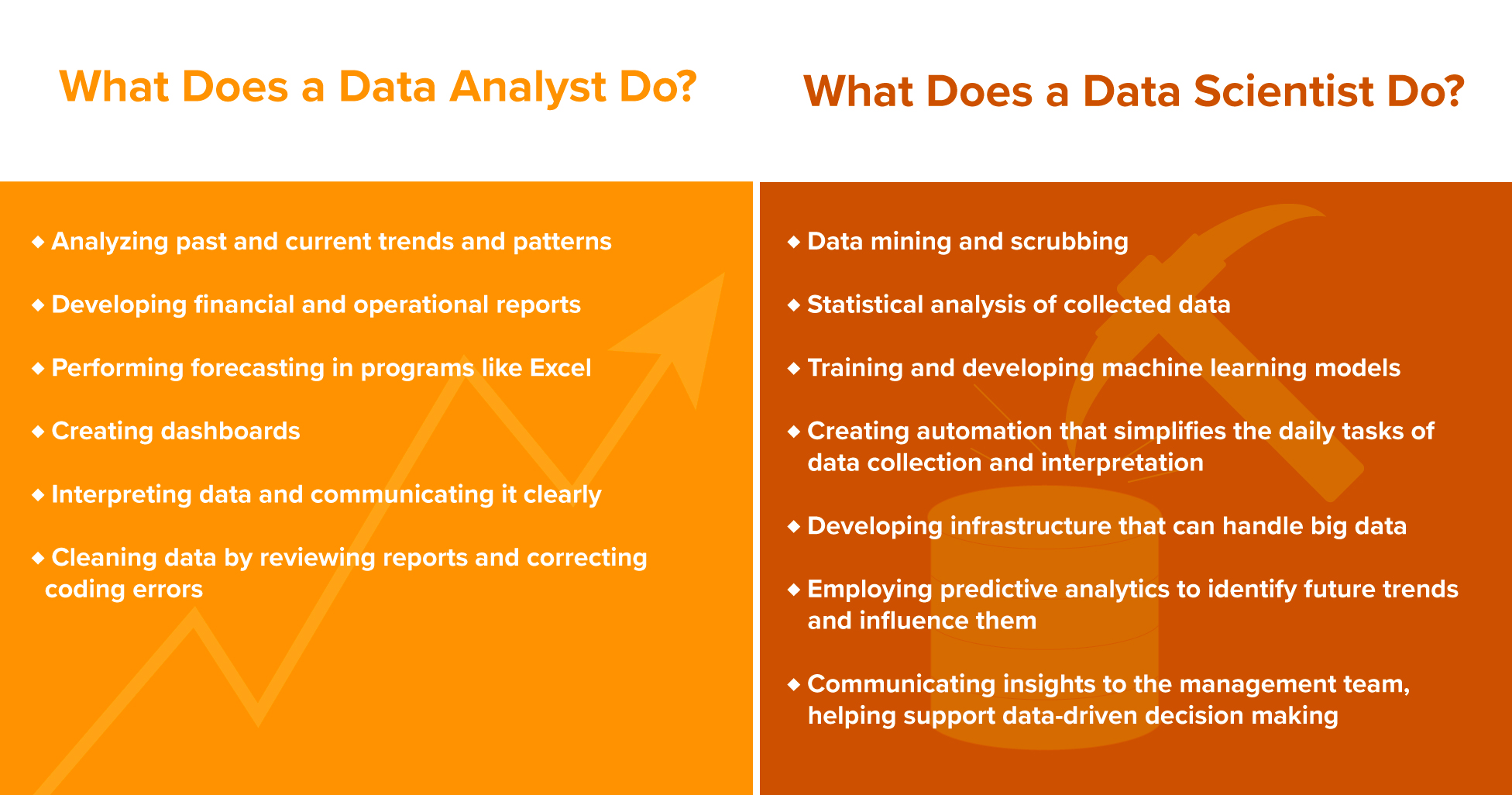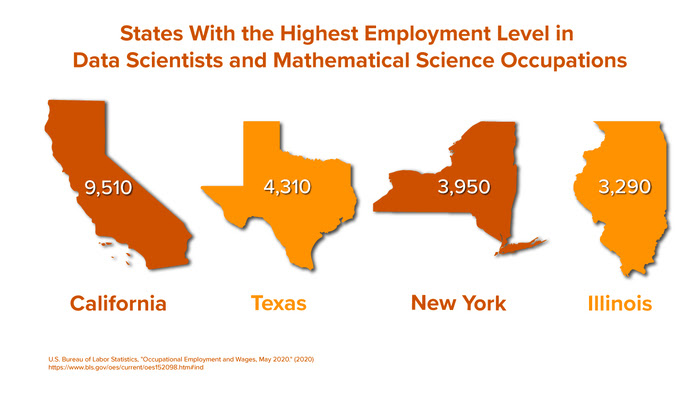Data Analytics vs. Data Science Education Requirements
Most companies looking to hire a data scientist or data analyst will expect applicants to have at least a bachelor’s degree in a related field. For some positions, companies may even expect you to have a master’s degree or Ph.D in fields like data science, computer science, statistics, applied mathematics, finance, or even psychology.
During your studies, you should focus on classes in higher mathematics, like statistics, algebra, and calculus. Computer science classes will also give you useful skills in database design, data analytics, and management. Taking classes in business will help you to understand how the data will be used to make decisions. And finance, business theory, and economics courses can prepare you to connect data sets and real-world business decisions.
Whether you want to pursue data science or data analytics, you’ll be required to learn basic data collection and interpretation skills which are taught in bootcamps like The Data Analysis and Visualization Boot Camp at Texas McCombs. This is a great way to refresh your skills and quickly gain new and updated knowledge about the field online, with flexible hours that accommodate your work schedule.
Data Analyst Education
Nearly all entry-level positions in data analytics require a bachelor’s degree. Common fields of study include information technology, computer science, or statistics. Minoring or taking additional classes in database management, project management, and business theory will also make you more marketable.
As a data analyst, you may want to consider continuing your education with a master’s degree or certificate program. Many schools offer programs in data science, data analytics, or big data management that will introduce you to the newest technologies available in data capture, as well as provide internship opportunities with corporations that are leaders in the data analysis field.
Certificate programs, bootcamps, and independent study are all great methods of advancing your skills in data analysis. Consider starting with these four books that every data analyst should read.
How Long Does It Take to Become a Data Analyst?
Most bachelor’s degrees take four years to complete. If you choose to pursue an advanced degree, a master’s degree in data analysis usually takes around two years to complete.
Learning the specific systems used in data analytics can be done in a few months. There are certificate programs and bootcamps that will teach you to use SQL, Python, or advanced Microsoft Excel skills. You can complete a data analysis bootcamp to refresh or increase your skills in less than a year. You’ll study all the tools and technologies you will use as a data analyst and be prepared to use them in real-world settings like finance, business, health care, and government.
Data Scientist Education
For an entry-level position in data science, a bachelor’s degree is expected. Programs at many colleges or universities will prepare you for a career in data science. Popular majors include information technology, applied mathematics, computer science, economics, finance, and statistics. For those interested in a career in a specific industry sector, consider programs like artificial intelligence, mathematical biology, or computational science.
While a bachelor’s degree can get you started as an entry-level data scientist, you’ll likely want to continue your education in order to remain competitive. Advanced degrees that will help you find a data scientist job include statistics, computer science, physics, mathematics, and social sciences.
How Long Does It Take to Become a Data Scientist?
Data scientists are expected to have a bachelor’s degree, at minimum, which usually takes four years to complete. Since many earn higher degrees, it can take six to eight years in total to earn the educational requirements for a data scientist.
There are many options available for those interested in studying data science. While traditional college and university classes are still widely available and used, there are also online and self-paced courses you can take advantage of as well. Becoming a data scientist demands curiosity, excellence in prioritizing tasks, and considerable communication skills so you can translate complex topics into understandable information. In addition, having aptitude in logic, advanced mathematics, and programming is helpful too.
A bootcamp is a great way to sharpen your skills and gain the experience you need to enter the field of data science. A data analysis bootcamp can teach you the technical skills you’ll need to move forward in a practical, real-world environment. For example, The Data Analysis and Visualization Boot Camp at Texas McCombs is a 24-week course that will teach you the in-demand data analytics and visualization programs and have an impressive portfolio that shows you can manage real-life scenarios. Consider joining today to jump-start your career as a data scientist.

 Live Chat
Live Chat


